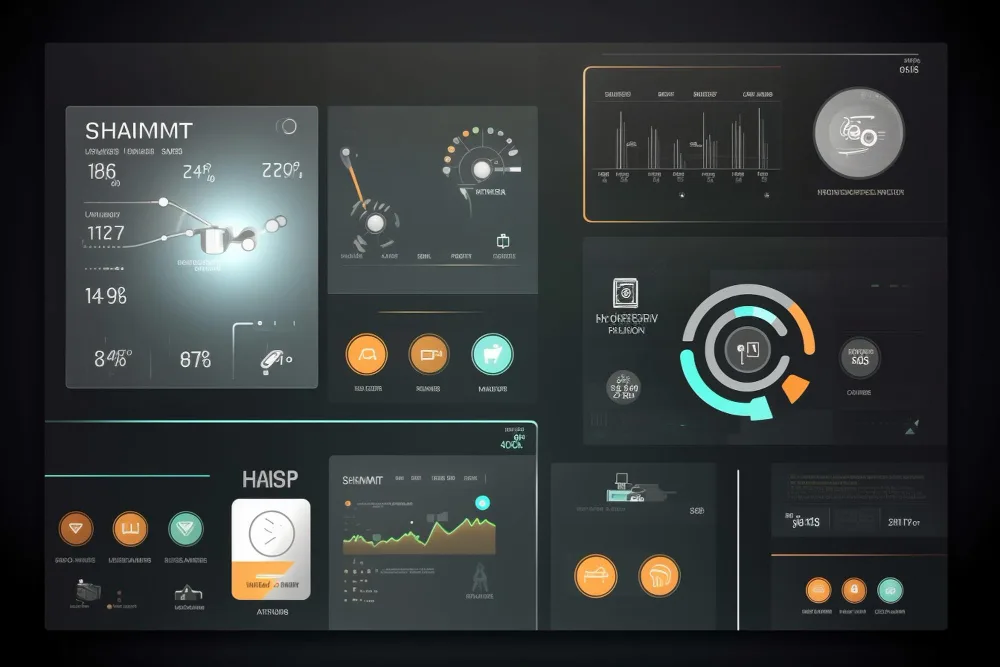Are you ready to dive into the exciting world of UI testing ? As a UI tester, you wear many hats – from bug hunting to user experience testing . In this blog post, we will explore the diverse responsibilities and skills required for this dynamic role . Join us as we uncover the importance of ensuring a seamless and enjoyable user experience through meticulous testing techniques . Let’s embark on this thrilling journey together !
Understanding the role of a UI tester
A User Interface (UI) tester is an essential member of any software development team . They play a crucial role in ensuring that the final product meets all design specifications and provides users with an exceptional experience .
The primary responsibility of a UI tester is to thoroughly test the user interface and ensure its functionality, usability and overall quality . This involves working closely with designers, developers and project managers throughout the entire software development cycle . The goal is to identify any issues or bugs that may impact the user experience and provide timely feedback for improvements .
One of the key skills needed for a successful UI tester is attention to detail . They must have a sharp eye for identifying even the smallest flaws in the user interface . This could include alignment issues, spelling errors, broken links or inconsistent font styles . By meticulously examining each aspect of the UI, they can help ensure that every element looks and functions as intended .
Another crucial role of a UI tester is to understand the end-user’s perspective and test accordingly . This means anticipating how different types of users might interact with the software and conducting tests from their point of view . It also requires staying updated on industry trends and incorporating best practices into their testing methodology .
Aside from technical skills, effective communication is another important trait for a UI tester . They must be able to clearly communicate their findings to other team members in non-technical terms while still providing enough detail for developers to replicate issues easily . Additionally, they should be able to work collaboratively with others in order to come up with solutions that benefit both usability and functionality .
One critical aspect often overlooked by some organizations is time management when it comes to UI testing . A skilled UI tester knows how to prioritize tasks based on their importance and urgency while efficiently using resources available at hand . With tight deadlines being common in software development projects, time management becomes critical in delivering high-quality results within set timelines .
A UI tester’s role is crucial in bridging the gap between design and function to create an exceptional user experience . By understanding the end-user’s perspective, paying attention to detail, effective communication and time management, they can help ensure that software meets both functional requirements and delights users with its usability .
The different hats worn by a UI tester
One of the key roles of a UI tester is to wear many different hats, as they are responsible for various aspects of the user interface and overall functionality of a software or application . These "hats" represent unique tasks and responsibilities that a UI tester must perform in order to ensure a seamless user experience . In this section, we will explore some of the different hats worn by a UI tester .
- The User Experience (UX) Tester Hat :
As the name suggests, this hat involves evaluating how users interact with the software or application from an experiential standpoint . A UX tester tests for ease-of-use, intuitiveness and overall satisfaction with using the interface to complete tasks . They also look for potential pain points that could be improved upon to enhance user experience .
- The Compatibility Tester Hat :
A critical aspect of any software or application is its compatibility with various devices and operating systems . As such, one important hat worn by UI testers is that of compatibility testing – verifying that an app works correctly on different devices, screen sizes, browsers, etc ., without compromising its functionality .
- The Visual Designer Hat :
In addition to ensuring proper functioning and usability, UI testers also play a crucial role in maintaining visual consistency and aesthetics across all pages/screens within an application or website . This includes checking for things like color scheme adherence, accurate alignment and spacing of elements, font styles/sizes/weights used consistently throughout each page/screen .
- The Localization Tester Hat :
In today’s globalized world where products are marketed globally in multiple languages, the localization tester hat is crucial . These testers ensure that the software or application supports different languages and cultures without compromising its functionality or user experience .
UI testers wear many hats and play a significant role in ensuring the success of any software or application . Their diverse skill set, attention to detail and ability to think from a user’s perspective make them a valuable asset for any development team . By continuously switching between these hats throughout the testing process, they can guarantee a high-quality user interface that meets all requirements and provides an excellent user experience .
Skills and knowledge required for UI testing
The role of a UI Tester is crucial in ensuring that a product or application meets the needs and expectations of its users . To be successful in this role, one must possess specific skills and knowledge to effectively conduct testing and identify any potential issues with the user interface .
- Understanding of User Experience (UX) Principles :
A UI Tester should have a strong understanding of UX principles to be able to evaluate the usability and functionality of an interface . This includes understanding user behavior, preferences and expectations while interacting with the interface . Knowledge of UX principles will also help in suggesting improvements that enhance the overall user experience .
- Proficiency in Multiple Operating Systems and Browsers :
A UI Tester must have expertise in using various operating systems like Windows, Mac OS, Linux, etc ., as well as different browsers such as Chrome, Safari, Firefox, etc ., to test the compatibility of an interface across multiple platforms . This will ensure that the product is accessible and functional for all users regardless of their device or browser preferences .
- Familiarity with Testing Tools :
UI Testers should be familiar with testing tools such as Selenium WebDriver, Appium, Ranorex Studio, etc ., which are essential for automating tests and reducing manual effort . These tools also allow for better coverage of test cases and provide detailed reports on bugs found during testing .
- Proficient in Bug Tracking Management :
Having excellent bug tracking management skills is crucial for a UI Tester . They need to be proficient in accurately identifying bugs through clear reporting and documentation so that developers can easily replicate them and resolve them efficiently .
- Instinctive Attention to Detail :
Being meticulous with every aspect of an interface is vital for a UI Tester’s success since even tiny design flaws can significantly impact user experience . A keen eye for detail allows them to quickly identify any inconsistencies or issues within an interface .
- Familiarity with Agile Methodology :
Agile methodology is widely used by software development teams and a UI Tester must be familiar with it to align their testing process with the development cycle . This includes participating in daily stand-up meetings, understanding user stories and adapting to changes quickly .
Being a successful UI Tester requires a combination of technical expertise and soft skills like critical thinking, problem-solving and strong communication . By continuously updating their knowledge and staying up-to-date with industry trends and best practices, UI Testers can excel in their role and ensure that products have an intuitive user interface that meets users’ needs .
Steps involved in the UI testing process
The process of testing a user interface (UI) goes far beyond simply clicking and tapping around to identify bugs . A comprehensive UI testing process involves several steps, each with its own specific purpose and goal . In this section, we will explore the main steps involved in UI testing and their importance in ensuring a smooth and flawless user experience .
- Planning :
The first step in any testing process is planning . This involves defining the scope of the test, identifying specific requirements and objectives, as well as outlining the different components that need to be tested within the UI . Additionally, this stage also includes setting up a test environment with all necessary tools and resources .
- Test Case Design :
Once the planning is complete, it is important to design effective test cases that cover all aspects of the UI functionality . These test cases serve as a guide for testers to ensure they have thoroughly covered all possible scenarios during their testing process .
- Functional Testing :
This step involves checking if all the features and functions of the UI are working correctly according to specifications . Testers will navigate through different screens or pages, interact with various elements such as buttons or menus and validate input fields for data accuracy .
- Usability Testing :
Usability testing focuses on the user experience and how easy it is to interact with the UI . This includes evaluating factors such as navigation, layout, design and overall intuitiveness . Testers will also gather user feedback to identify any areas that may be confusing or difficult for users .
- Compatibility Testing :
With technology evolving rapidly, there are a multitude of devices and platforms that users can access applications from . Compatibility testing ensures that the UI functions correctly and looks consistent across different devices, browsers and operating systems .
- Performance Testing :
A poorly performing UI can significantly impact user satisfaction and engagement . This step involves measuring loading times, responsiveness and other performance metrics to ensure an optimal user experience .
- Accessibility Testing :
It is important for a UI to be accessible to all types of users, including those with disabilities such as vision impairments or motor limitations . Accessibility testing ensures that the UI complies with relevant accessibility standards and provides a smooth user experience for all individuals .
- Localization Testing :
If an application is being released in multiple languages or regions, it is crucial to test the UI for any language-specific issues or cultural sensitivities .
- Documentation :
It is important to document the testing process, including test cases, results and any bugs found . This serves as a reference for future releases or changes to the UI .
In conclusion, a thorough UI testing process involves planning, designing test cases, functional testing, usability testing, compatibility testing, performance testing, accessibility testing, localization testing, regression testing, bug tracking and reporting, documentation, UAT and a final release . Each step plays a crucial role in discovering and resolving any issues in the UI to provide a smooth and satisfactory user experience .
Common challenges faced by UI testers and how to overcome them
As with any job, being a UI tester comes with its own set of challenges . These challenges can arise from various sources such as the constantly evolving technology landscape, project timelines and resource constraints, communication issues with developers and other stakeholders, just to name a few . In this section, we will delve into some of the common challenges faced by UI testers and provide tips on how to effectively overcome them .
- Keeping Up with Technology Changes :
One of the biggest challenges faced by UI testers is keeping up with the constant changes in technology . With new programming languages, frameworks and devices being introduced regularly, it can be overwhelming for testers to stay updated . This can lead to difficulties in understanding how different elements interact with each other and ultimately result in bugs slipping through the cracks .
To overcome this challenge, it is crucial for UI testers to continuously focus on learning new tools and technologies . Regular training sessions or workshops can be helpful in keeping skills sharp and up-to-date . Additionally, staying connected to tech communities and networking with other professionals in the field can also aid in staying updated on industry trends .
- Meeting Deadlines :
UI testing is often carried out towards the end of a development cycle when there are tight project deadlines looming over everyone’s heads . As a UI tester, there may be times when you feel pressured to complete testing within a limited timeframe while ensuring thoroughness at the same time .
In order to address this challenge, effective time management skills are essential for a UI tester . This includes prioritizing tasks based on their criticality and breaking down testing into smaller chunks that can be performed efficiently without sacrificing quality .
- Communication Issues :
Effective communication between team members is crucial for any project’s success but it becomes even more important for a UI tester who must work closely with both developers and stakeholders .
To overcome this challenge, it is important for these lines of communication to be open and transparent throughout the project lifecycle . Regular meetings or standups can help in discussing any issues or concerns and providing timely feedback can facilitate a collaborative working environment .
- Ensuring Cross-Browser/Device Compatibility :
With the increasing variety of operating systems and devices, ensuring cross-browser compatibility becomes a significant challenge for UI testers . A seemingly minor difference in how the website or application is displayed across different browsers or devices could result in major user experience issues .
To tackle this challenge, thorough testing on all expected browser/device combinations should be conducted throughout the development process to catch any inconsistencies early on .
Being a successful UI tester requires not only technical skills but also effective time management, communication and adaptability . By proactively addressing these common challenges, UI testers can efficiently carry out their tasks and contribute to the overall success of a project .
Tools used by UI testers for efficient testing
As UI testers, our main objective is to ensure that the user interface of a software or application is functioning flawlessly and providing a smooth user experience . To achieve this goal, we utilize a variety of tools and techniques that help us in efficient testing . In this section, we will discuss some of the key tools used by UI testers for effective testing .
- Browser DevTools :
Another essential tool for UI testers is browser development tools (DevTools) . These are built-in debugging aids present in every web browser that allow developers to inspect HTML elements, modify CSS styles, track network activity, debug JavaScript code and simulate mobile devices . As a UI tester, we can use these DevTools to identify layout issues, analyze network requests/responses for performance optimization & API integration tests .
- Cross-Browser Testing Tools :
With an increasing number of browsers available today (Chrome/Edge/Firefox/Safari), ensuring compatibility across different platforms has become crucial for any application’s success . To achieve this accuracy across multiple browsers without manual intervention requires tools like BrowserStack or LambdaTest which offer live interactive responsive device emulators making cross-browser & hybrid platform/device specific checks simpler .
- Performance Monitoring Tools :
Apart from functional testing, it is also crucial to test the performance of an application under different circumstances . Tools like Apache JMeter, Google Lighthouse provide real-time feedback on website loading time & performance metrics in addition to suggesting best practices for SEO and accessibility .
Using these tools not only increases the efficiency of UI testing but also helps us identify bugs faster and deliver a high-quality product to end-users . As technology continues to advance rapidly, embracing newer tools and techniques will be crucial for UI testers to keep up with the ever-changing landscape of software development .
Importance of good communication skills for a UI tester
Effective communication is a crucial skill for any profession and this is especially true for UI testers . The ability to express ideas clearly and concisely, understand project requirements and collaborate effectively with team members are all essential elements of successful UI testing . In this section, we will delve into the importance of good communication skills for a UI tester .
Firstly, as a UI tester, you will be working in a fast-paced environment where time is of the essence . Being able to communicate efficiently and clearly with your team can help streamline workflow processes and ensure that tasks are completed on time . This is particularly important when it comes to bug reporting – if a critical issue arises during testing, you need to be able to effectively convey the details to developers in order for them to troubleshoot and fix it quickly .
Furthermore, good communication skills also involve active listening – not just speaking . As a UI tester, you must pay close attention during project meetings and discussions with stakeholders . By actively listening, you can gain valuable insights into project goals, user requirements and potential issues that may arise during testing . This allows you to provide targeted feedback and suggestions throughout the development process .
Additionally, clear communication extends beyond just verbal interactions; it also includes written communication such as documenting bugs or creating test reports . A well-written bug report should not only include specific details about the issue but also provide steps on how to reproduce it . This ensures that developers have all the information they need to replicate and resolve the problem efficiently .
Good communication skills are also necessary for collaboration between different teams involved in software development projects – including developers, designers, product managers, etc . As a UI tester, you serve as a liaison between these teams by providing input from both technical and user perspectives . Effective collaboration requires clear articulation of ideas as well as providing constructive feedback when necessary .
Moreover, having strong communication skills helps build trust among team members . By being transparent in your thoughts and communicating openly and honestly, you contribute to creating a positive work environment . This fosters better teamwork and enhances overall productivity .
In Conclusion, good communication skills are essential for UI testers in order to deliver quality software products . From collaborating with team members to documenting bugs and providing input, effective communication is the key to success in the role of a UI tester . By continuously honing your communication skills, you not only improve as a tester but also add significant value to the development process as a whole .
Conclusion
In conclusion, a UI tester is not just responsible for finding bugs and glitches in a user interface, but also plays an important role in ensuring that the final product is visually appealing and easy to use .
By wearing multiple hats, they are able to provide valuable insights into the overall design and functionality of a software or website .
As technology continues to advance and user experience becomes increasingly important, the role of a UI tester will only become more crucial in delivering successful products to consumers .











